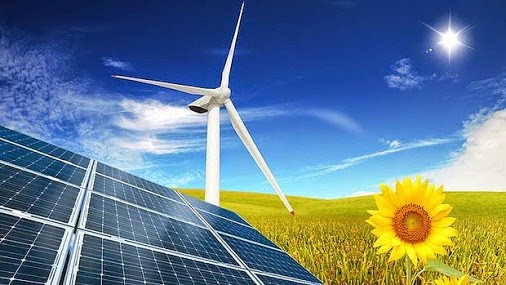Sacramento Ca Solar News – At a time when California needs to fire up the job machine there is a new report that suggests solar and wind will do exactly that. Recently released, the study indicates increasing solar, wind and other forms of renewable energy installation will put on 100,000 new jobs. The study, commissioned by the California Business Alliance for a Green Economy, looks at ongoing, approved and pending projects stretching from Sacramento to Bakersfield.
The majority of the potential jobs are in installation of solar, wind and other renewable energy utility projects. In order to realize these gains, however, the California voters must defeat prop 23 (Texas oil trying to overturn energy laws) and continue the pressure on Congress and Sacramento to power up solar and other forms of renewable energy.
California’s current solar and wind energy requirements have already helped to attract new energy and technology companies but we must keep the pressure on.
New energy work in the valley could bring big jobs says Marijke Rowland in an article written for the Modesto Bee. A study by a University of California at Merced professor suggests that renewable energy projects could bring more than 100,000 jobs to the San Joaquin Valley over the next decade.
The study by economics Professor Shawn Kantor looked at large and small solar and wind utility projects that are under way, have been approved or are in the regulatory pipeline. Positions created by the proposed California High-Speed Rail Authority plan are included.
The jobs would be a mix of construction and production work. “There is a lot of activity going on right now in solar and wind renewable energy and there is a lot of activity planned,” Kantor said. “This could have a big impact on our economy. This could serve as a job creator in our region. We have a lot of clean energy, solar and wind resources from Sacramento to Bakersfield, and we can be a significant player in this sector.”
The study, commissioned by the California Business Alliance for a Green Economy, looks at ongoing, approved and pending solar and wind energy projects stretching from Sacramento to Bakersfield. The majority of the potential jobs are in construction of renewable energy utility scale solar and wind projects. About 24,000 of the estimated 103,510 total jobs created would be from the high-speed rail plan.
While the numbers are encouraging, Bill Bassitt, chief executive officer of the Stanislaus Economic Development and Workforce Alliance, said the reality may turn out differently. “It’s always good having someone put pen to paper and make projections, but I don’t get too excited until I see the rubber meet the road,” he said. “I don’t want people to be misinformed or deceived about the number of permanent jobs associated with solar and wind energy. It’s not the panacea.”
The vast majority of the solar and wind jobs created would come from construction installation. About 4,500 of the total positions would be long term solar production jobs. Still, for an area that has seen its unemployment rate skyrocket into the high teens and in some counties past 20 percent during the recession, any kind of optimistic jobs outlook is welcome.
Stanislaus County’s California central valley unemployment rate was at 16.4 percent for August and hit a 17-year high of 19.2 percent in March. The mortgage crisis and housing collapse ravaged the area’s construction industry. Susan Frank, coordinator for the California Business Alliance for a Green Economy that commissioned the study, said the valley’s geographic and demographic figures make it a prime location for solar and wind energy growth. “The valley has been hardest hit by the economic downturn,” she said. “So there are well-trained workers poised and ready to take on this work that, along with the sunny weather and land opportunities, make the valley perfect for this kind of solar clean energy job growth.”
The utility projects largely are private companies producing solar, wind and biomass energy. The majority of the projects are in the Southern San Joaquin Valley. Most of the wind projects are near the Tehachapi Mountains. San Joaquin County has one biomass plant and Merced County has a smaller biomass plant included in the report.
Kantor said Stanislaus County could position itself as a solar or biomass destination. On Tuesday, the Modesto Irrigation District rejected a proposal for a biomass plant in the Beard Industrial District. Designed to burn wood chips from orchards, the MID pulled out of the project after hearing public concerns about its impact on air quality and the cost of buying power from the plant.
Kantor also said that while booms in the information technology and biotech industries largely passed by the San Joaquin Valley, the area has kept pace with the rest of the state in solar and wind energy growth.
Based on last year’s “Next 10: Many Shades of Green” study, statewide green energy solar employment grew 36 percent from 1995 to 2008. San Joaquin Valley employment in solar and wind energy grew by 48 percent over the same period. Kantor said even discounting the high-speed rail project, which faces significant political obstacles, the potential for job growth in renewable energy is impressive.
“One thing that really strikes me is that whenever I approach studies about the San Joaquin Valley is how far we lag behind the state power houses and what it will take to catch up with solar and other renewable energy of the more prosperous regions,” he said. “If you think of the other developments that swept through California, we’ve been largely left behind,” Kantor said.
“But I’m hopeful about the sustainable energy industry fixing this broken economy. With renewable solar and wind energy, we have this advantage: Sacramento to Bakersfield has the natural resources and the solar and wind turbine installers to get the job done.”
